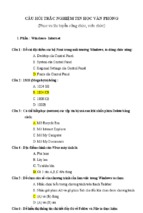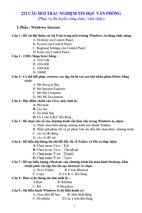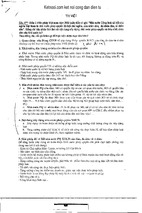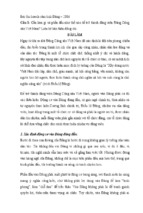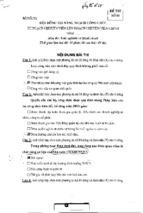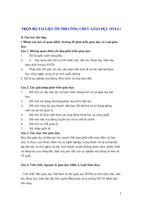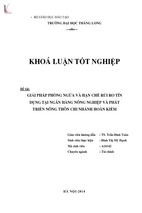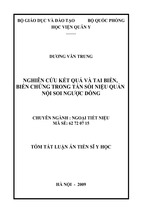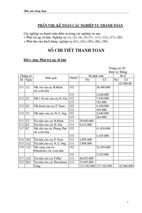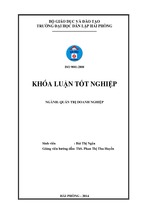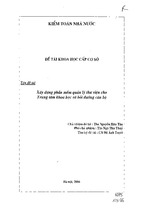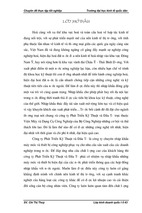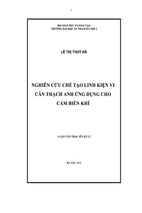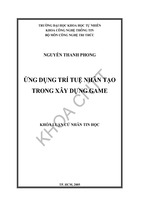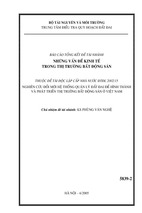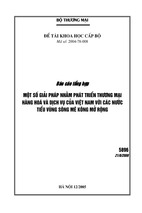www.AccountingPdfBooks.com
www.AccountingPdfBooks.com
www.AccountingPdfBooks.com
www.AccountingPdfBooks.com
Equity Asset
Valuation
Workbook
www.AccountingPdfBooks.com
CFA Institute is the premier association for investment professionals around the world, with
over 130,000 members in 151 countries and territories. Since 1963 the organization has
developed and administered the renowned Chartered Financial Analyst® Program. With a rich
history of leading the investment profession, CFA Institute has set the highest standards in
ethics, education, and professional excellence within the global investment community, and is
the foremost authority on investment profession conduct and practice. Each book in the CFA
Institute Investment Series is geared toward industry practitioners along with graduate-level
finance students and covers the most important topics in the industry. The authors of these
cutting-edge books are themselves industry professionals and academics and bring their wealth
of knowledge and expertise to this series.
www.AccountingPdfBooks.com
Equity Asset
Valuation
Workbook
Third Edition
Jerald E. Pinto, CFA
Elaine Henry, CFA
Thomas R. Robinson, CFA
John D. Stowe, CFA
www.AccountingPdfBooks.com
Cover image: © ER_09/Shutterstock
Cover design: Wiley
Copyright © 2004, 2007, 2015 by CFA Institute. All rights reserved.
Published by John Wiley & Sons, Inc., Hoboken, New Jersey.
Published simultaneously in Canada.
No part of this publication may be reproduced, stored in a retrieval system, or transmitted in any form or by
any means, electronic, mechanical, photocopying, recording, scanning, or otherwise, except as permitted under
Section 107 or 108 of the 1976 United States Copyright Act, without either the prior written permission of
the Publisher, or authorization through payment of the appropriate per-copy fee to the Copyright Clearance
Center, Inc., 222 Rosewood Drive, Danvers, MA 01923, (978) 750-8400, fax (978) 646-8600, or on the Web at
www.copyright.com. Requests to the Publisher for permission should be addressed to the Permissions Department,
John Wiley & Sons, Inc., 111 River Street, Hoboken, NJ 07030, (201) 748-6011, fax (201) 748-6008, or online at
www.wiley.com/go/permissions.
Limit of Liability/Disclaimer of Warranty: While the publisher and author have used their best efforts in preparing
this book, they make no representations or warranties with respect to the accuracy or completeness of the contents
of this book and specifically disclaim any implied warranties of merchantability or fitness for a particular purpose.
No warranty may be created or extended by sales representatives or written sales materials. The advice and strategies
contained herein may not be suitable for your situation. You should consult with a professional where appropriate.
Neither the publisher nor author shall be liable for any loss of profit or any other commercial damages, including
but not limited to special, incidental, consequential, or other damages.
For general information on our other products and services or for technical support, please contact our Customer
Care Department within the United States at (800) 762-2974, outside the United States at (317) 572-3993, or fax
(317) 572-4002.
Wiley publishes in a variety of print and electronic formats and by print-on-demand. Some material included with
standard print versions of this book may not be included in e-books or in print-on-demand. If this book refers to
media such as a CD or DVD that is not included in the version you purchased, you may download this material at
http://booksupport.wiley.com. For more information about Wiley products, visit www.wiley.com.
ISBN 978-1-119-10461-2 (Paperback)
ISBN 978-1-119-10463-6 (ePDF)
ISBN 978-1-119-10517-6 (ePub)
Printed in the United States of America.
10 9 8 7 6 5 4 3 2 1
www.AccountingPdfBooks.com
Contents
Part I�
Learning Objectives, Summary Overview, and Problems�
1
Chapter 1
Equity Valuation: Applications and Processes�
Learning Outcomes 3
Summary Overview 3
Problems 5
3
Chapter 2
Return Concepts�
Learning Outcomes 9
Summary Overview 9
Problems 11
9
Chapter 3
Introduction to Industry and Company Analysis�
Learning Outcomes 17
Summary Overview 18
Problems 20
17
Chapter 4
Industry and Company analysis�
Learning Outcomes 25
Summary Overview 26
Problems 26
25
Chapter 5
Discounted Dividend Valuation�
Learning Outcomes 33
Summary Overview 34
Problems 36
33
v
www.AccountingPdfBooks.com
vi Contents
Chapter 6
Free Cash Flow Valuation�
Learning Outcomes 45
Summary Overview 46
Problems 48
45
Chapter 7
Market-Based Valuation: Price and Enterprise Value Multiples�
Learning Outcomes 61
Summary Overview 62
Problems 65
61
Chapter 8
Residual Income Valuation�
Learning Outcomes 75
Summary Overview 76
Problems 77
75
Chapter 9
Private Company Valuation�
Learning Outcomes 85
Summary Overview 86
Problems 87
85
Part II
Solutions�95
Chapter 1
Equity Valuation: Applications and Processes�
Solutions 97
97
Chapter 2
Return Concepts�
Solutions 101
101
Chapter 3
Introduction to Industry and Company Analysis�
Solutions 107
107
Chapter 4
Industry and Company Analysis�
Solutions 109
109
www.AccountingPdfBooks.com
Contents�
vii
Chapter 5
Discounted Dividend Valuation�
Solutions 113
113
Chapter 6
Free Cash Flow Valuation�
Solutions 123
123
Chapter 7
Market-Based Valuation: Price and Enterprise Value Multiples�
Solutions 137
137
Chapter 8
Residual Income Valuation�
Solutions 145
145
Chapter 9
Private Company Valuation�
Solutions 157
About the CFA Program�
157
161
www.AccountingPdfBooks.com
www.AccountingPdfBooks.com
Equity Asset
Valuation
Workbook
www.AccountingPdfBooks.com
www.AccountingPdfBooks.com
Part
I
Learning Objectives,
Summary Overview,
and Problems
1
www.AccountingPdfBooks.com
www.AccountingPdfBooks.com
Chapter
1
Equity Valuation:
Applications
and Processes
Learning Outcomes
After completing this chapter, you will be able to do the following:
• define valuation and intrinsic value and explain sources of perceived mispricing;
• explain the going concern assumption and contrast a going concern value to a liquidation
value;
• describe definitions of value and justify which definition of value is most relevant to public
company valuation;
• describe applications of equity valuation;
• describe questions that should be addressed in conducting an industry and competitive
analysis;
• contrast absolute and relative valuation models and describe examples of each type of model;
• describe sum-of-the-parts valuation and conglomerate discounts;
• explain broad criteria for choosing an appropriate approach for valuing a given company.
Summary overview
In this reading, we have discussed the scope of equity valuation, outlined the valuation process,
introduced valuation concepts and models, discussed the analyst’s role and responsibilities in
conducting valuation, and described the elements of an effective research report in which analysts communicate their valuation analysis.
• Valuation is the estimation of an asset’s value based on variables perceived to be related to
future investment returns, or based on comparisons with closely similar assets.
3
www.AccountingPdfBooks.com
4
Part I: Learning Objectives, Summary Overview, and Problems
• The intrinsic value of an asset is its value given a hypothetically complete understanding of
the asset’s investment characteristics.
• The assumption that the market price of a security can diverge from its intrinsic value—
as suggested by the rational efficient markets formulation of efficient market theory—
underpins active investing.
• Intrinsic value incorporates the going-concern assumption, that is, the assumption that a
company will continue operating for the foreseeable future. In contrast, liquidation value is
the company’s value if it were dissolved and its assets sold individually.
• Fair value is the price at which an asset (or liability) would change hands if neither buyer nor seller were under compulsion to buy/sell and both were informed about material underlying facts.
• In addition to stock selection by active traders, valuation is also used for:
• inferring (extracting) market expectations;
• evaluating corporate events;
• issuing fairness opinions;
• evaluating business strategies and models; and
• appraising private businesses.
• The valuation process has five steps:
1. Understanding the business.
2. Forecasting company performance.
3. Selecting the appropriate valuation model.
4. Converting forecasts to a valuation.
5. Applying the analytical results in the form of recommendations and conclusions.
• Understanding the business includes evaluating industry prospects, competitive position,
and corporate strategies, all of which contribute to making more accurate forecasts. Understanding the business also involves analysis of financial reports, including evaluating the
quality of a company’s earnings.
• In forecasting company performance, a top-down forecasting approach moves from macroeconomic forecasts to industry forecasts and then to individual company and asset forecasts.
A bottom-up forecasting approach aggregates individual company forecasts to industry forecasts, which in turn may be aggregated to macroeconomic forecasts.
• Selecting the appropriate valuation approach means choosing an approach that is:
• consistent with the characteristics of the company being valued;
• appropriate given the availability and quality of the data; and
• consistent with the analyst’s valuation purpose and perspective.
• Two broad categories of valuation models are absolute valuation models and relative valuation models.
• Absolute valuation models specify an asset’s intrinsic value, supplying a point estimate of
value that can be compared with market price. Present value models of common stock (also
called discounted cash flow models) are the most important type of absolute valuation model.
• Relative valuation models specify an asset’s value relative to the value of another asset. As
applied to equity valuation, relative valuation is also known as the method of comparables, which involves comparison of a stock’s price multiple to a benchmark price multiple.
The benchmark price multiple can be based on a similar stock or on the average price
multiple of some group of stocks.
• Two important aspects of converting forecasts to valuation are sensitivity analysis and situational adjustments.
• Sensitivity analysis is an analysis to determine how changes in an assumed input would
affect the outcome of an analysis.
www.AccountingPdfBooks.com
Chapter 1 Equity Valuation: Applications and Processes�
5
• Situational adjustments include control premiums (premiums for a controlling interest in
the company), discounts for lack of marketability (discounts reflecting the lack of a public
market for the company’s shares), and illiquidity discounts (discounts reflecting the lack
of a liquid market for the company’s shares).
• Applying valuation conclusions depends on the purpose of the valuation.
• In performing valuations, analysts must hold themselves accountable to both standards of
competence and standards of conduct.
• An effective research report:
• contains timely information;
• is written in clear, incisive language;
• is objective and well researched, with key assumptions clearly identified;
• distinguishes clearly between facts and opinions;
• contains analysis, forecasts, valuation, and a recommendation that are internally consistent;
• presents sufficient information that the reader can critique the valuation;
• states the risk factors for an investment in the company; and
• discloses any potential conflicts of interests faced by the analyst.
• Analysts have an obligation to provide substantive and meaningful content. CFA Institute
members have an additional overriding responsibility to adhere to the CFA Institute Code
of Ethics and relevant specific Standards of Professional Conduct.
Problems
1. Critique the statement: “No equity investor needs to understand valuation models because real-time market prices for equities are easy to obtain online.”
2. The reading defined intrinsic value as “the value of an asset given a hypothetically complete
understanding of the asset’s investment characteristics.” Discuss why “hypothetically” is
included in the definition and the practical implication(s).
3. A. Explain why liquidation value is generally not relevant to estimating intrinsic value for
profitable companies.
B. Explain whether making a going-concern assumption would affect the value placed
on a company’s inventory.
4. Explain how the procedure for using a valuation model to infer market expectations about
a company’s future growth differs from using the same model to obtain an independent
estimate of value.
5. Example 1, based on a study of Intel Corporation that used a present value model (Cornell
2001), examined what future revenue growth rates were consistent with Intel’s stock price
of $61.50 just prior to its earnings announcement, and $43.31 only five days later. The
example states, “Using a conservatively low discount rate, Cornell estimated that Intel’s
price before the announcement, $61.50, was consistent with a forecasted growth rate of
20 percent a year for the subsequent 10 years and then 6 percent per year thereafter.”
Discuss the implications of using a higher discount rate than Cornell did.
6. Discuss how understanding a company’s business (the first step in equity valuation) might
be useful in performing a sensitivity analysis related to a valuation of the company.
Practice Problems and Solutions: Equity Asset Valuation, Second Edition, by Jerald E. Pinto, CFA, Elaine
Henry, CFA, Thomas R. Robinson, CFA, and John D. Stowe, CFA. Copyright © 2009 by CFA Institute.
www.AccountingPdfBooks.com
6
Part I: Learning Objectives, Summary Overview, and Problems
7. In a research note on the ordinary shares of the Milan Fashion Group (MFG) dated early
July 2007 when a recent price was €7.73 and projected annual dividends were €0.05, an
analyst stated a target price of €9.20. The research note did not discuss how the target
price was obtained or how it should be interpreted. Assume the target price represents the
expected price of MFG. What further specific pieces of information would you need to
form an opinion on whether MFG was fairly valued, overvalued, or undervalued?
8. You are researching XMI Corporation (XMI). XMI has shown steady earnings per share
growth (18 percent a year during the last seven years) and trades at a very high multiple
to earnings (its P/E is currently 40 percent above the average P/E for a group of the most
comparable stocks). XMI has generally grown through acquisition, by using XMI stock to
purchase other companies whose stock traded at lower P/Es. In investigating the financial
disclosures of these acquired companies and talking to industry contacts, you conclude
that XMI has been forcing the companies it acquires to accelerate the payment of expenses
before the acquisition deals are closed. As one example, XMI asks acquired companies to
immediately pay all pending accounts payable, whether or not they are due. Subsequent
to the acquisition, XMI reinstitutes normal expense payment patterns.
A. What are the effects of XMI’s pre-acquisition expensing policies?
B. The statement is made that XMI’s “P/E is currently 40 percent above the average P/E
for a group of the most comparable stocks.” What type of valuation model is implicit
in that statement?
The following information relates to Questions 9–16
Guardian Capital is a rapidly growing US investment firm. The Guardian Capital research
team is responsible for identifying undervalued and overvalued publicly traded equities that
have a market capitalization greater than $500 million.
Due to the rapid growth of assets under management, Guardian Capital recently hired a
new analyst, Jack Richardson, to support the research process. At the new analyst orientation
meeting, the director of research made the following statements about equity valuation at
Guardian:
Statement 1 �“Analysts at Guardian Capital seek to identify mispricing, relying on price
eventually converging to intrinsic value. However, convergence of the
market price to an analyst’s estimate of intrinsic value may not happen
within the portfolio manager’s investment time horizon. So, besides evidence of mispricing, analysts should look for the presence of a particular
market or corporate event,—that is, a catalyst—that will cause the marketplace to re-evaluate the subject firm’s prospects.”
Statement 2 �“An active investment manager attempts to capture positive alpha. But
mispricing of assets is not directly observable. It is therefore important
that you understand the possible sources of perceived mispricing.”
Statement 3 �“For its distressed securities fund, Guardian Capital screens its investable
universe of securities for companies in financial distress.”
Statement 4 �“For its core equity fund, Guardian Capital selects financially sound
companies that are expected to generate significant positive free cash flow
from core business operations within a multiyear forecast horizon.”
Statement 5 �“Guardian Capital’s research process requires analysts to evaluate the reasonableness of the expectations implied by the market price by comparing
the market’s implied expectations to his or her own expectations.”
www.AccountingPdfBooks.com
- Xem thêm -

